About Navarasas in Natyashastra
Human life is a rich fabric which gains colour and feel amidst the series of happenings that shape it. These mundane actions that characterize every day as well as the extraordinary happenings make life further interesting while evoking feelings in human being. These feelings are the emotions or rasas, which indeed offers life colours and pattern. Rasas thus define the unedited realities of life amidst their vibrancies of emotion.
Rasas are the anchor of performing art, or natya and this fact was recognized in the long gone days by Bharata muni. In his treatise, Natyashastra, Bharata in detail has described the Nine Rasas or Navarasas that are the basis of all human emotion. Each rasa, according to Natyashastra, has a presiding deity and a specific colour. Natyashastra deals with each of the nine rasas which encompasses not just the emotion, but also the various things that cause that emotion. Bharata, codified the emotional responses into nine separately distinguishable categories, hence the term navarasas. Nava means nine, and rasa literally means `essence`, however navarasas in Natyashastra is used to demonstrate the nine categories of the `emotional state`.
The navarasas or the nine rasas depicted in the Natyashastra are :
Shringara
Hasyam
Rowdram
Karunyam
Bibhatsam
Bhayanakam
Shanta
Adbhuta
Veeram
Shringara Rasa
 Bharata himself says, "whatever is sacred, pure, placid and worth seeing" can be compared to Sringara rasa. Of all the rasas, Sringara receives the most detailed and enthusiastic treatment by early rhetoricians and later writers on poetics. It is referred to as the king of the sentiments (rasaraja); as the lord of all sentiments (rasapati); writers vie in praising it. The word itself has been variously interpreted and a range of etymologies suggested for it. Just as the names of persons are assigned in accordance with the traditional customs and practice in his family so also the nomenclature of the Rasas and bhavas and other things in as much as they are concerned with the dramatic performance, proceeds along the tradition in vogue and the advice of persons in authority. In the case of Sringara Rasa too, it is so named because it goes along with an elegant bright dress and make up pleasant to all.
Bharata himself says, "whatever is sacred, pure, placid and worth seeing" can be compared to Sringara rasa. Of all the rasas, Sringara receives the most detailed and enthusiastic treatment by early rhetoricians and later writers on poetics. It is referred to as the king of the sentiments (rasaraja); as the lord of all sentiments (rasapati); writers vie in praising it. The word itself has been variously interpreted and a range of etymologies suggested for it. Just as the names of persons are assigned in accordance with the traditional customs and practice in his family so also the nomenclature of the Rasas and bhavas and other things in as much as they are concerned with the dramatic performance, proceeds along the tradition in vogue and the advice of persons in authority. In the case of Sringara Rasa too, it is so named because it goes along with an elegant bright dress and make up pleasant to all.
According to Natyashastra, both male and female characters are behind the outcome of Sringara Rasa. It has two Adhisthanas or Bases namely Sambhoga (Love in Union) and Vipralambha (Love in Separation). Sambhoga is love in union and gets itself manifested through the Vibhavas or Determinants viz. the pleasant season, garlands, unguents, ornaments, people dear and near, sensual objects, excellent mansions, objects of pleasure, going to the garden, experiencing pleasures, listening to sweet voices, seeing beautiful things, play and sports etc. The presentation of Sringara Rasa in the drama is by means of gestures through the Anubhavas (consequents) viz, clever and significant glances of the eyes, movements of the eyebrows, movements of limbs and sweet Angaharas (major dance figures).
Bharata further explains that Vipralambha or Love in Separation should be displayed during the dramatic performance through the following Anubhavas (consequents) viz. Nirveda (dejectedness and indifference to worldly joys), Glani (languor), Sanka (apprehension), Asuya (jealousy), Srama (weariness), Cinta (anxiety and worry), Autsukya (yearning), Nidra (drowsiness), Supta (Sleep), Svapna (dream), Bibboka (feigned anger), Vyadhi (illness), Unmada (insanity), Anasmara (forgetfulness), Jadya (Sluggishness), Marana (death) and other conditions. Karuna rasa is distinct from Vipralambha. The former involves a desperate condition as a result of curse affliction, downfall, separation from the near and dear, loss of wealth, imprisonment, slaughter etc. The Vipralambha or love in separation incorporates the condition of sticking to hopeful expectation of reunion out of yearning and anxiety.
The term Sringara refers to a man who is richly endowed with all desirable things and much interested in pleasure, who makes full use of the seasons for enhancing his pleasure and who is accompanied by a youthful maiden. Sringara Rasa is the outcome of the activities like the favourable season, garlands, ornaments sweet music, poetry, and persons dear and near, frequenting parks and gardens sporting activities. Its presentation in the dramatic performance is through graceful movements of the limbs accompanied by sweet smiles, pleasing words, fortitude, delighted expressions, serene eyes, beaming face etc.
Sringara has high visibility in the Indian arts. Natyashastra is not only treatise, though it is the most ancient one, to mention this kind of rasa. The concept of navarasas had existed even before Bharata composed Natyashastra. He himself acknowledges his debt to older masters. Post the age of Bharata, distinguished dramatic works in which Shringara forms the subject came into existence. These included the poetic literature from the 7th century onwards. The kind of love treated, may be divine or human, but the passion seldom falters. In the post Gupta and medieval sculptures and Indian miniature paintings, the theme of Sringara is prevailing. In addition to these, the monuments, such as, Konark and Khajuraho, come to mind with the mention of eroticism in the arts of India. But it is not erotica that comes to the mind while thinking of Sringara. It is, rather, the sentiments in all its subtlety of aspects, its infinitely variegated forms, that figures so prominently in the arts. The mood, the flavour of love can be depicted and communicated movingly.
The rhetoricians say that Sringara is pre-eminent as a rasa because it is the only one with which all the complementing emotional states, barring fear, indolence, cruelty and disgust can be connected with which all the enduring emotional states (sthayibhavas) except that of disgust can be brought into harmony.
There is an absolute delight in viewing the art work dipped in Sringara rasa. The finest example exists in Rajput paintings. Besides these the sculpture of divine lovers seated under a tree from Nachna during Gupta and post-Gupta period; Mughal painting where a prince waits for his bride; paintings with Radha-Krishna as the theme are also worth mentioning.
Hasya Rasa
 Hasya Rasa is an integral part of the Natyashastra. Laughter is the Sthayi Bhava or the dominant emotion in Hasya rasa. The determinants or Vibhavas of Hasya rasa are Vikrtavesa (Unseemly dress), Vikrtalankara (misplaced ornaments), Dharstya (Impudance), Laulya (covetousness), Kalaha (quarrel), Asatpracapa (near-obscene utterance), Vyanga Darsana (displaying deformed limbs), Dosoda Harana (Pointing out the faults of others) and other related things. In the dramatic performance it is displayed through the Anubhavas or consequents like biting the lips, throbbing of the nose and the cheek, opening the eyes wide, contracting the eyes, perspiration, colour of the face, holding the sides and others.
Hasya Rasa is an integral part of the Natyashastra. Laughter is the Sthayi Bhava or the dominant emotion in Hasya rasa. The determinants or Vibhavas of Hasya rasa are Vikrtavesa (Unseemly dress), Vikrtalankara (misplaced ornaments), Dharstya (Impudance), Laulya (covetousness), Kalaha (quarrel), Asatpracapa (near-obscene utterance), Vyanga Darsana (displaying deformed limbs), Dosoda Harana (Pointing out the faults of others) and other related things. In the dramatic performance it is displayed through the Anubhavas or consequents like biting the lips, throbbing of the nose and the cheek, opening the eyes wide, contracting the eyes, perspiration, colour of the face, holding the sides and others.
The Vyabhicari Bhavas or the Transitory States of Hasya Rasa are lethargy, dissimulation, drowsiness, sleeplessness, dreaming, waking up, envy and other things.
Hasya is of two kinds, Atmastha or self-based, Parastha or based in others. When the actor laughs to himself it is called Atmastha when he makes another laugh it is called Parastha. The display of oddly placed ornaments, unseemly behaviour, irrelevant words, faulty dress, strange movements of the limb etc. make people laugh so this Rasa is called Hasya.
This Rasa is most common to women characters and persons of the mean order. It has six distinct varieties which are Smita (gentle smile), Hasita (slight laughter), Vihasita (open laughter), Upahasita (Laughter of ridicule), Apahasita (obscene laughter) and Atihasita (Boisterous laughter). The superior types of persons, the middling ones and the base ones have respectively two of these. Smita and Hasita belong to the people of high rank; Vihasita and Upahasita to the ordinary people and Apahasita and Atihasita to the mean people.
For the people of high Rank, the cheeks are slightly blown, the glances are elegant, and the teeth can not be seen, in the Smita. And in Hasita, the mouth and the eyes are blooming, the cheeks are blown and the teeth are slightly seen. For the Middling ones, Vihasita should be befitting the occasion. It is laughter when slight sound is produced sweetly. The actor contracts the eyes and the cheeks. There is cheerful luster in the face. In the course of the Upahasita the nostrils become expanded. The shoulder and the head become a little bent. For the mean People the Apahasita is usually unsuitable to the context. Tears trickle from the eyes. The actor violently shakes the shoulders and the head. The Atihasita is excessively boisterous. The eyes are expanded, tears drop from them and hands cover the sides.
Hasya rasa is an essential part of the Natyashastra. When humorous interludes arise in the course of a dramatic performance the author shall so depict the smile or laughter as the case may be that the superior, middling and the mean do so befittingly.
Raudra Rasa in Natyashastra
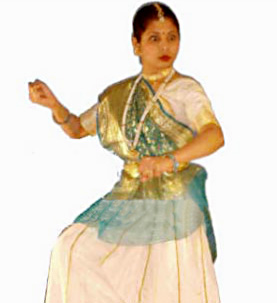 Raudra Rasa is one of the important rasa in Natyashastra and the dominant emotion or the Sthayi Bhava in this rasa is Krodha or anger. It takes its origin in the Raksasas, Danavas and very haughty human beings with a regular battle as its immediate cause. Its outcome is though the Vibhavas or determinants much as Krodha (anger), Dharsana (violation of modesty), Adhiksepa (abuse), Apamana (insult), Anrtavacana (uttering falsehoods), Vakparusya (Harsh words), Droha (animosity), Matsarya (jealousy) and kindred ones. The activities connected with Raudra Rasa are beating, tearing, harassing, chopping off, breaking, piercing, striking hurling missiles, shedding blood, seizing of weapons and similar activities.
Raudra Rasa is one of the important rasa in Natyashastra and the dominant emotion or the Sthayi Bhava in this rasa is Krodha or anger. It takes its origin in the Raksasas, Danavas and very haughty human beings with a regular battle as its immediate cause. Its outcome is though the Vibhavas or determinants much as Krodha (anger), Dharsana (violation of modesty), Adhiksepa (abuse), Apamana (insult), Anrtavacana (uttering falsehoods), Vakparusya (Harsh words), Droha (animosity), Matsarya (jealousy) and kindred ones. The activities connected with Raudra Rasa are beating, tearing, harassing, chopping off, breaking, piercing, striking hurling missiles, shedding blood, seizing of weapons and similar activities.
The presentation of Raudra rasa in the dramatic performance is through the Anubhavas, such as making the eyes red, perspiring profusely, knitting of the eyebrows, clapping the hands, biting of the lips, throbbing of the cheeks, hitting the palm with the fist etc. The Vyabhicari Bhavas of this Rasa are tumultuous battle, energetic enthusiasm, impetuosity, wrath, restlessness, ferocity, profuse perspiration, trembling, rising of the hairs etc. There is Raudra in the case of others too apart from the Raksasas. But here the special prerogative is to be taken into consideration. By nature the Raksasas are very furious. They are endowed with many hands and mouths. They have tawny disheveled hairs standing up in an ugly manner. Their eyes are red and fearful. Their bodies are dark skinned and very huge. Whatever they undertake is naturally very furious, even their ordinary movements, utterance of words etc. are excessively fierce. Even those persons who imitate them are to be credited with the Raudra Rasa through the activities of fighting etc.
Raudra Rasa is produced through the excitement due to battles, hitting and striking, cutting and tearing, maiming and mutilating. Its presentation in the dramatic performance is by means of these special feats such as discharging different kinds of missiles, chopping off of the headless trunks, arms, heads etc. Thus the Raudra Rasa is seen as a fierce activity where there is much of the wielding of weapons and the movements and utterance of words etc. are very terrible and frightening.
Karuna Rasa
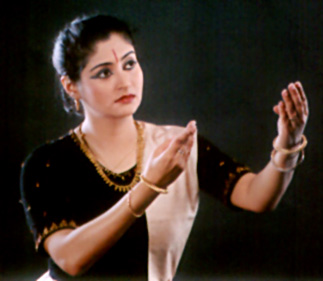 Karuna rasa is a very essential part of the Natyashastra. The dominant emotion or the Sthayi Bhava in Karuna rasa is soka or sorrow. The Vibhavas or determinants of Karuna rasa are curse, distress, down fall, calamity, and separation from the near and dear ones, loss of wealth, murder, imprisonment, flight, dangerous accidents and misfortunes. Its presentation in the stage is through the following Anubhavas, viz. discharge of tears, lamentation, parched throat and mouth, pallor of the face, drooping of the limbs, gasping for breath, loss of memory and other similar things.
Karuna rasa is a very essential part of the Natyashastra. The dominant emotion or the Sthayi Bhava in Karuna rasa is soka or sorrow. The Vibhavas or determinants of Karuna rasa are curse, distress, down fall, calamity, and separation from the near and dear ones, loss of wealth, murder, imprisonment, flight, dangerous accidents and misfortunes. Its presentation in the stage is through the following Anubhavas, viz. discharge of tears, lamentation, parched throat and mouth, pallor of the face, drooping of the limbs, gasping for breath, loss of memory and other similar things.
The Vyabhicari Bhavas of Karuna rasa are dejectedness, in difference, languor, anxiety, yearning excited state, illusion, loss of sense, sadness, ailments, lethargy, sluggishness, epileptic loss of memory, fear, death, paralysis, tremor, pallor in the face, shedding of tears, loss of speech and the kindred feelings. The Natyashastra states that the Karuna Rasa takes its origin through different Bhavas either at the sight of the death (or murder) of the dear one or when unpleasant words have an adverse impact. It is to be presented in the stage through sighs, lamentations, loss of sense, weeping bitterly and other similar gestures.
Bibhatsa Rasa
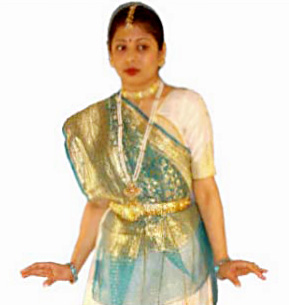 Bibhatsa Rasa in Natyashastra deals with the odious sentiment and the Sthayi bhava of Bibhatsa Rasa is juguptsa or disgust. The outcome of Bibhatsa Rasa is from the Vibhavas or determinants such as Ahrdya- apriya- aveksa (seeing what is unwholesome or displeasing), Anisfa- Sravana- Darsana- Parikirtana (hearing, seeing and discussing what is undesirable) and such similar things. Its representation on the stage is through the anubhavas such as Sarvangahara (Squeezing up all the limbs), Mukhanetraghur-nana (moving the face to and fro, rolling the eyes), Hrllekha (heartache, grief anxiety), Nisthivana (spiting), Udvejana (expressing disgust) and the likes.
Bibhatsa Rasa in Natyashastra deals with the odious sentiment and the Sthayi bhava of Bibhatsa Rasa is juguptsa or disgust. The outcome of Bibhatsa Rasa is from the Vibhavas or determinants such as Ahrdya- apriya- aveksa (seeing what is unwholesome or displeasing), Anisfa- Sravana- Darsana- Parikirtana (hearing, seeing and discussing what is undesirable) and such similar things. Its representation on the stage is through the anubhavas such as Sarvangahara (Squeezing up all the limbs), Mukhanetraghur-nana (moving the face to and fro, rolling the eyes), Hrllekha (heartache, grief anxiety), Nisthivana (spiting), Udvejana (expressing disgust) and the likes.
The Vyabhicari Bhavas are Apasmara (loss of memory), Vega, (Agitation), Moha (delusion or loss of sense), Vyadhi (illness), and Marana (death) etc. the Natyashastra states that the Bibhatsa Rasa arises through many things causing antipathy such as seeing what is not desirable, defects and abnormality in tests, smells touch and sound. Its presentation on the stage should be perfectly earned out by means of shaking the head, soiling the eyes, closing the eyes, covering the nose, lending down the head and walking imperceptibly.
Bhayanaka Rasa in Natyashastra
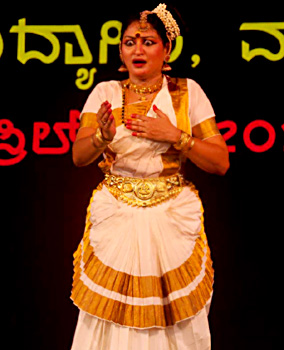 Bhayanaka rasa or the terrible sentiment is one of the essential rasas in the Natyashastra. The Sthayi Bhava of Bhayanaka rasa is Bhaya or fright. The outcome of Bhayanaka rasa is through the Vibhavas or determinants such as Vikrta Rava or terrific noise, Uarsana Sight of apparitions, Sivoluka Trasodvega or the panic and worried state on hearing the cries of jackals and owls, Sunyagara or the Empty house, Aranya Pravesa or entering a forest, Marana or deaths, Svajanavadha or the murder of kings men, Bandhana or Imprisonment, seeing or hearing about or discussing any of these things and the like.
Bhayanaka rasa or the terrible sentiment is one of the essential rasas in the Natyashastra. The Sthayi Bhava of Bhayanaka rasa is Bhaya or fright. The outcome of Bhayanaka rasa is through the Vibhavas or determinants such as Vikrta Rava or terrific noise, Uarsana Sight of apparitions, Sivoluka Trasodvega or the panic and worried state on hearing the cries of jackals and owls, Sunyagara or the Empty house, Aranya Pravesa or entering a forest, Marana or deaths, Svajanavadha or the murder of kings men, Bandhana or Imprisonment, seeing or hearing about or discussing any of these things and the like.
The presentation of Bhayanaka rasa on the stage is through the Anubhavas such as Pravepitakaracarana (trembling of the hands and feet), Nayanachalana (movements of the eyes), Pulaka (hairs standing on ends), Mukha Vaivarnya (Pallor in the face), Svarabheda (change of voice and tone) and the likes. The Vyabhichari bhavas are Stambha (Paralysis), Sveda (Perspiration), Gadgada (Choked Voice). Romanca (horrification), Vepathu (trembling), Svarabheda (change of voice or tone), Vaivarnya (lack of luster), Sanka (suspicion), Moha (fainting), Dainya (dejection), Avega (Agitation), Capala (restlessness), Trasha (fright), Apasmara (epilepsy or loss of memory), Marana (death) etc.
According to the Natyashastra, the Bhayanaka Rasa should be understood as produced through same offensive behaviour towards elders or Kings or by any of the following such as hideous noise, sight of apparitions, seeing a battle, entering the forest or an empty house. Fear is naturally produced and displayed by the various movements of the limbs, face and eyes, stunned sensation in the thighs, looking nervously and uneasily around, dejected feelings, tired face, dryness of the mouth, throbbing of the heart, and horrification. The feigned fright is also to be displayed by these Bhavas but the movements of the limbs are gentler. The Bhayanaka Rasa to be presented on the stage in variably through the trembling of the hands and feet, paralysis, palpitation, agitation in the limbs, parched lips, plate and throat.
Adbhuta Rasa
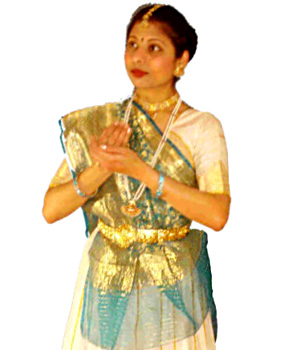 Adbhuta rasa in Natyashastra is about the sentiment of wonderment surprise. The Sthayi bhava of the rasa is Vismaya or astonishment. The outcome of Adbhuta rasa is through the Vibhavas such as Divyadarsana (seeing a heavenly being), psitamanorathavapti (Attainment of the cherished desire), Uttamavanadevakulabhiga- mana (proceeding towards excellent park, temple etc), seeing magical tricks and creations of things that can never be imagined about etc. The presentation of Adbhuta rasa on the stage is through the Anubhavas such as Nayanavistara (gaping of the eyes), Animesapreksana (staring with wink less eyes), Romanca (horrification), Asru (tears), Sveda (Perspiration}, Harsa (delight), Sadhuvada (uttering words of congratulation), Pradana (making gifts), Bandhahahakara (senses of shouts of ha, ha), karacaranangulibhramana (movements of hands, feet) and the like.
Adbhuta rasa in Natyashastra is about the sentiment of wonderment surprise. The Sthayi bhava of the rasa is Vismaya or astonishment. The outcome of Adbhuta rasa is through the Vibhavas such as Divyadarsana (seeing a heavenly being), psitamanorathavapti (Attainment of the cherished desire), Uttamavanadevakulabhiga- mana (proceeding towards excellent park, temple etc), seeing magical tricks and creations of things that can never be imagined about etc. The presentation of Adbhuta rasa on the stage is through the Anubhavas such as Nayanavistara (gaping of the eyes), Animesapreksana (staring with wink less eyes), Romanca (horrification), Asru (tears), Sveda (Perspiration}, Harsa (delight), Sadhuvada (uttering words of congratulation), Pradana (making gifts), Bandhahahakara (senses of shouts of ha, ha), karacaranangulibhramana (movements of hands, feet) and the like.
The Vyabhicari bhavas of Adbhuta rasa are shedding tears, paralysis, perspiration choking of the voice, horrification, thrill, excitement, sluggishness, sinking down etc.
According to the Natyashastra, the Rasa called Adbhuta should be recognised through these special features such as marvellous statement, conduct, actuary, form etc. Its presentation on the stage is through the perception of touch, earnest display of laughter, shouting of ha ha, congratulatory remarks, tremor, choking words, perspiration etc.
Veera Rasa
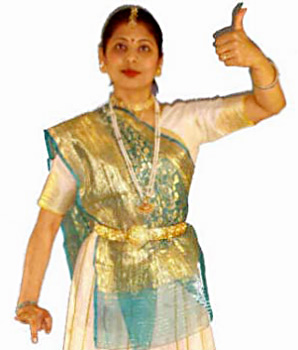 Vira Rasa in one of the rasa in the Natyashastra and it deals with the exhibition of energy and enthusiasm with persons of high rank. The Vibhavas or determinants of Vira rasa are Asammoha or Composure and absence of infatuation, Adhyavasaya or perseverance, Naya or good tactics, Vinaya or humility, Parakrama or Valour, Shakti or Power, Pralapa or Aggressiveness, Prabhava or mighty influence and other similar things. The presentation of the Vira rasa on the stage is through the Anubhavas or Consequents such as Sthairya (firmness), Shaurya (heroism), Dhairya (patience), Tyaga (readiness to sacrifice), Vaisaradya (Proficiency) and the like.
Vira Rasa in one of the rasa in the Natyashastra and it deals with the exhibition of energy and enthusiasm with persons of high rank. The Vibhavas or determinants of Vira rasa are Asammoha or Composure and absence of infatuation, Adhyavasaya or perseverance, Naya or good tactics, Vinaya or humility, Parakrama or Valour, Shakti or Power, Pralapa or Aggressiveness, Prabhava or mighty influence and other similar things. The presentation of the Vira rasa on the stage is through the Anubhavas or Consequents such as Sthairya (firmness), Shaurya (heroism), Dhairya (patience), Tyaga (readiness to sacrifice), Vaisaradya (Proficiency) and the like.
The Sancari Bhavas or the Transitory States of Vira rasa in Natyashastra are Dhrti (fortitude), Mati (intellect), Garva (Pride), Vega (impetuosity), Augrya (ferocity), Amarsa (indignation), Smriti (Recollection), Romancha (horrification) and other akin features. In this connection there are two verses in the Arya metre which are traditionally handed down. Vira Rasa is produced through enthusiasm, perseverance, absence of grief, absence of surprise and freedom from delusion. The Vira Rasa should be depicted perfectly on the stage through statements such as scolding and censuring the wrong doers, display of bravery, vigour, heroism, enthusiasms, aggressiveness and exploits.
Shanta Rasa
Sama or the placid static emotion gives rise to shanta rasa. etachment towards worldly pleasures, going to places of pilgrimage, devotion towards God and teachers etc are the Vibhavas. Yama, Niyama, yogic postures, wearing ascetic garments, kindness towards all beings are the anubhavas. Depression, aversion, knowledge, recollection courage, stupefaction etc are the sanchari bhavas. When all these conditions prevail, Shanta Rasa is produced.




















